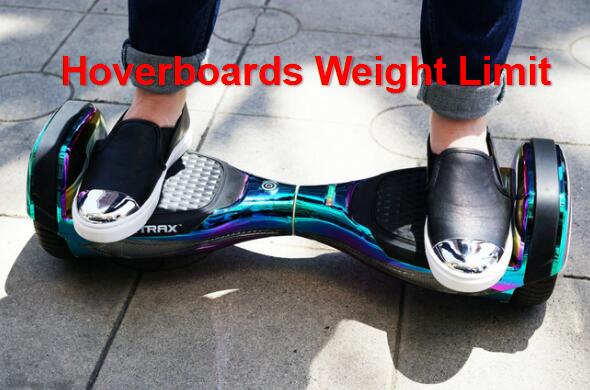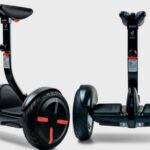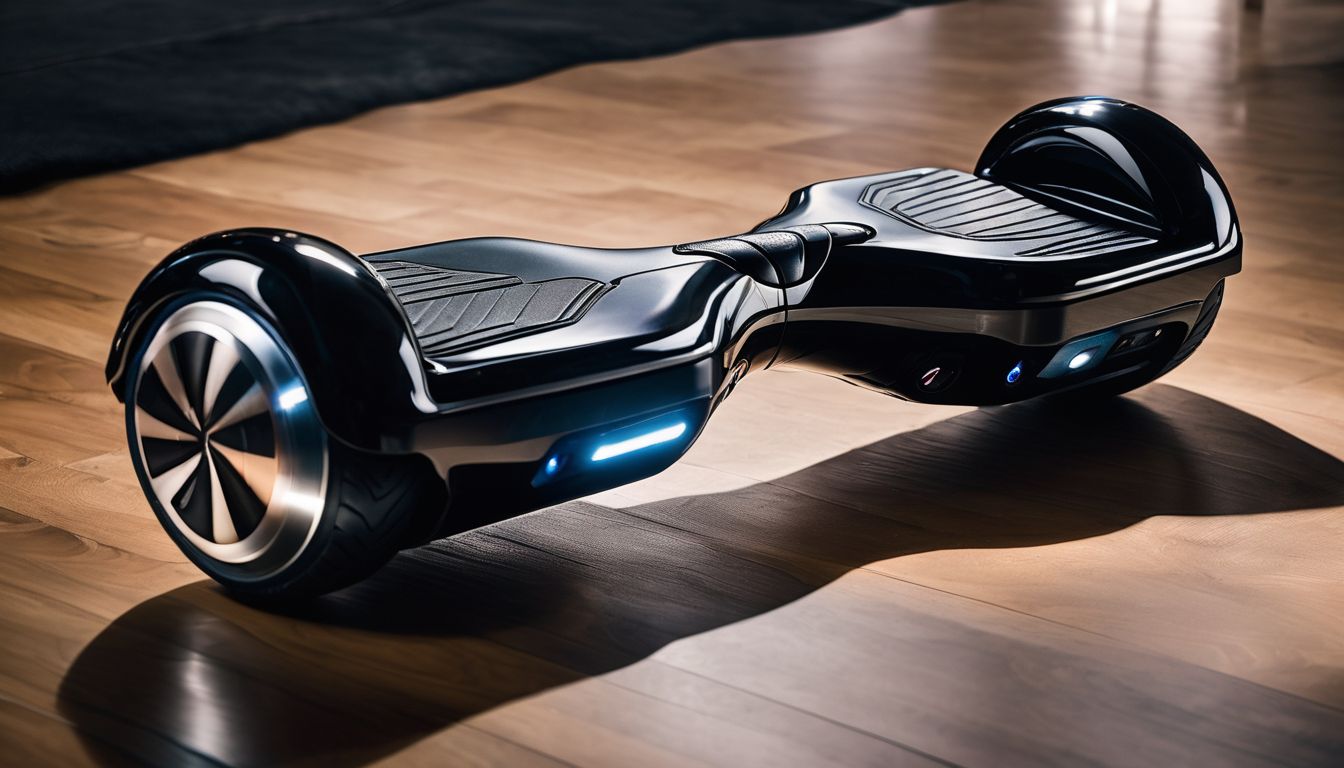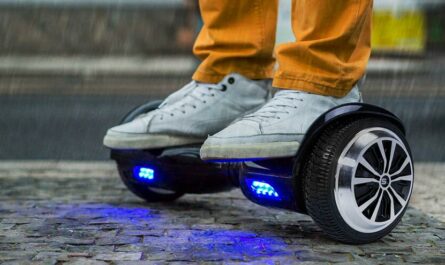Picking up your new hoverboard can sometimes feel like lifting a small boulder. Surprisingly, the average hoverboard weighs around 25 pounds. This guide will show you why that number matters and how to choose the best one for you.
Table of Contents
Key Takeaways
- Hoverboards vary in weight from about 15 to over 30 pounds, with the type of hoverboard determining its weight.
- Weight plays a crucial role in how easy it is to carry and transport a hoverboard, as well as battery efficiency and maneuverability during rides.
- When traveling with a hoverboard, be mindful of travel restrictions and weight limits to avoid additional fees or transportation issues.
- Exceeding the recommended weight limit on a hoverboard can reduce performance, lead to faster wear and tear, and increase safety risks.
- With different brands offering various sizes and weights of hoverboards, it’s important to select one that aligns with your personal needs for optimal performance.
Understanding Hoverboard Weight
The average weight range of hoverboards and the various factors that can affect their weight will be discussed in this section. Understanding hoverboard weight is essential for making informed decisions about which one to purchase.
Average weight range
Hoverboards come in various sizes and styles, each with a different weight to match its design and capabilities. The following table showcases the average weight range for hoverboards, providing a comprehensive view of how much these personal transport devices typically weigh.
| Hoverboard Type | Minimum Weight (lbs) | Maximum Weight (lbs) |
|---|---|---|
| Children’s Hoverboards | 10 | 15 |
| Standard Hoverboards | 20 | 30 |
| Off-road Hoverboards | 25 | 35 |
| Heavy-duty Hoverboards | 28 | 40 |
Many factors influence the weight of a hoverboard, such as battery size, wheel type, and frame materials. Next, we delve into why the weight of your hoverboard is a critical consideration for various aspects of its use.
Factors that affect weight
The average weight of hoverboards can vary, and several factors influence this range. Understanding these factors is essential for choosing the right hoverboard for your needs. Here are some key factors that affect hoverboard weight:
- Battery size and type: The battery is a significant contributor to the overall weight of a hoverboard. Larger or higher-capacity batteries will result in a heavier unit.
- Frame material: The material used for the frame, such as aluminum or steel, can impact the weight of the hoverboard. Different materials have varying densities, affecting the overall weight.
- Motor power: The power and size of the motors used in a hoverboard can also influence its weight. More powerful motors may add to the overall mass of the device.
- Additional features: Extra components like Bluetooth speakers, LED lights, and built-in GPS can contribute to the weight of a hoverboard.
- Tire size and type: The size and material of the tires can impact how much a hoverboard weighs. Larger or off-road tires generally result in a heavier overall unit.
Why Hoverboard Weight Matters
The weight of a hoverboard matters for ease of transport, travel restrictions, and its impact on performance. Understanding these factors can help you make an informed decision when choosing a hoverboard.
Ease of transport
Transporting a hoverboard is made easy due to its lightweight and portable design. With most hoverboards weighing between 20 to 30 pounds, they are convenient for carrying or storing in small spaces, making them accessible for daily use.
Whether you’re commuting on public transportation, walking short distances, or driving a car, the manageable weight of a hoverboard allows for hassle-free mobility.
When traveling, the lightweight nature of a hoverboard makes it an ideal companion for exploring new places without adding bulk to your luggage. Its compact size further enhances its transportability, enabling users to effortlessly carry it wherever they go.
Travel restrictions
When traveling with a hoverboard, it is essential to be aware of weight restrictions imposed by airlines and other modes of transportation. Exceeding the specified weight limit may result in additional fees or even refusal to transport the hoverboard.
It’s crucial to check the weight limits for both carry-on and checked baggage when planning your journey.
Acknowledging travel restrictions related to hoverboard weight will help prevent any inconvenience or unexpected costs during your travels. Be sure to verify the specific limitations set by each transportation provider before heading out, ensuring a smooth and hassle-free experience throughout your journey.
Impact on performance
Hoverboard weight significantly impacts performance. A lighter hoverboard allows for easier maneuverability and control, improving overall agility and responsiveness during rides. The weight distribution also affects stability, contributing to a smoother and more balanced riding experience.
Additionally, a lighter hoverboard may have better battery efficiency, enhancing the duration of use before requiring a recharge.
On the other hand, heavier hoverboards can offer increased stability at higher speeds and on uneven terrain due to their lower center of gravity. However, they may be less nimble in tight spaces or when making quick turns.

Hoverboard Bags and Carrying Options
Carrying Bag: A durable carrying bag designed specifically for hoverboards makes transporting easier and offers protection from scratches and bumps.
Weight Restrictions and Limits
Understanding weight restrictions and limits is crucial for safely using a hoverboard, as exceeding the recommended weight limit can lead to performance issues and potential safety risks.
To learn more about hoverboard weight limits and how they impact your riding experience, continue reading our comprehensive guide.
How they work
Hoverboard weight limits are designed to ensure safety and optimal performance. They work by dictating the maximum load a hoverboard can carry without straining the motor or compromising stability.
Exceeding these limits could lead to decreased battery life, reduced speed, and potential damage to the device. Understanding how they work is crucial for selecting the right hoverboard that aligns with your weight requirements while safeguarding its longevity.
When choosing a hoverboard, it’s vital to take note of weight restrictions to prevent any adverse effects on its functionality and durability. Adhering to these guidelines will help maintain the efficiency and safety of your device, ensuring an enjoyable riding experience without risking any technical issues.
Importance of following them
Following weight restrictions and limits when using a hoverboard is crucial for safety and optimal performance. Adhering to the recommended weight limit ensures that the hoverboard can operate efficiently, reducing the risk of motor strain or potential damage.
Moreover, staying within the specified weight capacity also helps in maintaining balance and control while riding, promoting a safer and more enjoyable experience. Exceeding the weight limit can lead to decreased battery life, slower speeds, and an increased likelihood of accidents, emphasizing the importance of following these guidelines for both personal safety and device longevity.
It is essential to understand that weight limits are set based on factors such as motor power, structural integrity, and overall design capabilities. By respecting these limitations indicated by manufacturers, users can prolong their hoverboard’s lifespan while minimizing associated risks.
Risks of exceeding the weight limit
Exceeding the weight limit of a hoverboard can lead to performance issues and potential safety hazards. A heavier load than the recommended capacity can strain the motor and battery, leading to decreased efficiency and shorter battery life.
Additionally, riding a hoverboard above its weight limit may cause instability, increasing the risk of accidents or loss of control while in use.
When riders exceed the maximum weight stipulated by manufacturers, they not only compromise their own safety but also risk damaging their hoverboards. Understanding and adhering to weight limits is crucial for ensuring optimal performance and prolonging the lifespan of your hoverboard.
How to Choose the Right Size and Weight for Your Needs
When choosing a hoverboard, it’s important to consider the recommended weight limit and find one that suits your needs. Different brands offer varying weight ranges, so it’s essential to compare and choose the right size and weight for your specific requirements.
Recommended weight limit
Consider the recommended weight limit when selecting a hoverboard to ensure safe and optimal performance. Exceeding the weight capacity can lead to decreased battery life, reduced speed, and strain on the motor.
By adhering to the manufacturer’s guidelines for maximum weight, riders can maintain stability and maneuverability while extending the lifespan of their hoverboard.
When considering a hoverboard’s specifications, be mindful of the weight limit as it directly impacts safety and overall experience. Different models come with varying weight capacities, so it’s crucial to choose one that aligns with your body weight for an enjoyable ride without compromising performance or safety.
Lightest and heaviest hoverboards on the market
Hoverboards come in a variety of weights, with some of the lightest options weighing around 15 to 20 pounds. These lightweight hoverboards are easy to carry and maneuver, making them ideal for users who prioritize portability. On the other end of the spectrum, heavier hoverboards can weigh up to 30 pounds or more, providing sturdiness and stability for those who value a more robust ride.
When considering your options, it’s crucial to balance weight with other features that match your needs and preferences. Some brands offer hoverboards that fall within this range, catering to different user requirements while offering various features such as extended battery life or enhanced performance capabilities.
Popular brands and their weight ranges
Hoverboards from top brands like Segway, Hover-1, and Swagtron have weight ranges between 20 to 30 pounds, offering a variety of options for different needs. Segway’s hoverboards typically weigh around 22 pounds, ensuring easy maneuverability and portability.
On the other hand, Hover-1 offers models that range from 23 to 29 pounds, providing sturdiness while being lightweight enough for convenient travel. Swagtron’s selection includes hoverboards weighing approximately 25 pounds, striking a balance between durability and manageable weight.
Additionally, Razor boards are known for their lightness at about 19 pounds which is great for young riders or those seeking lighter options. Other notable brands like Gotrax and Tomoloo also offer hoverboards with weights ranging from 18 to 27 pounds, catering to diverse preferences and requirements in terms of portability and performance.
Conclusion
In conclusion, understanding hoverboard weight is essential for making an informed choice. Carrying options and travel restrictions are crucial considerations when evaluating the impact of weight.
Choosing the right size and weight to meet your needs is key for a comfortable and convenient experience. Selecting a hoverboard with an appropriate weight limit ensures optimal performance and safe usage.
FAQs
1. How much does a standard hoverboard weigh?
A standard hoverboard typically weighs between 20 to 25 pounds, making it a portable choice for kids and adults.
2. What is the weight capacity of most hoverboards?
Most hoverboards have a weight capacity ranging from 220 to 265 pounds, suitable for riders of different sizes.
3. Can I find out the weight of a hoverboard in both pounds and kilograms?
Yes, you can easily convert hoverboard weight into pounds or kilograms; an average one weighs around 9 to 11 kilograms.
4. Is there a difference in electric scooter and electric skateboard weights compared to hoverboards?
There is some variation; electric scooters and skateboards might weigh less than self-balancing scooters, commonly known as hoverboards.
5. Are kid-friendly hoverboards lighter than those made for adults?
Kid-friendly hoverboards are designed lighter with lower weight capacities, generally accommodating up to approximately 120-130 pounds.
Related posts:
 How Much Do Hoverboards Cost? 2024 Prices and Guide
How Much Do Hoverboards Cost? 2024 Prices and Guide  How Long Does a Hoverboard Battery Last? Maximizing Your Ride
How Long Does a Hoverboard Battery Last? Maximizing Your Ride  Onewheel vs Hoverboard: Which One is Better for You?
Onewheel vs Hoverboard: Which One is Better for You?  Are Hoverboards Allowed on Airplanes?Know the Policies
Are Hoverboards Allowed on Airplanes?Know the Policies  Segway vs Hoverboard: Unveiling the Key Differences
Segway vs Hoverboard: Unveiling the Key Differences  Can You Ride a Hoverboard in the Rain?Tips for Safe Riding
Can You Ride a Hoverboard in the Rain?Tips for Safe Riding



